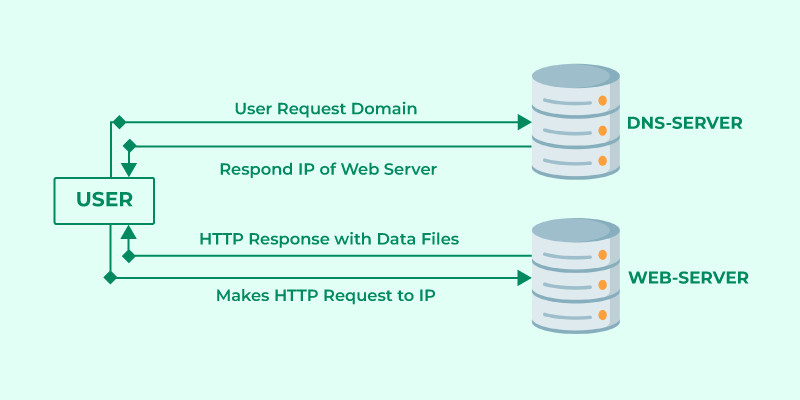The client-server model is a foundational architecture in computing and networking, structuring how applications and systems interact. It’s a distributed application framework that divides tasks between a server, which provides resources or services, and a client, which requests and utilizes those services. Think of it as a restaurant: the client (customer) places an order (request) with the server (waiter), who then retrieves the food (data/service) from the kitchen (the backend server) and brings it back to the client. This model is the backbone of many everyday technologies, from email and websites to online gaming and cloud computing.
What are Clients and Servers? Defining the Roles
To grasp the client-server model, it’s crucial to understand the roles of clients and servers:
-
Client: In essence, a client is any computer or program that requests services or resources from a server. Clients are typically user-facing applications, such as web browsers on your laptop, email applications on your phone, or even online game interfaces. Key characteristics of a client include:
- Request-driven: Clients initiate communication by sending requests to servers.
- Service consumers: Clients are designed to utilize the services provided by servers, without necessarily sharing their own resources in return within this model.
- Varied forms: Clients can be desktop applications, mobile apps, or even other computer systems.
-
Server: A server is a computer system or program that provides resources, data, or services to one or more clients. Servers are built to handle requests efficiently and reliably. Examples range from web servers hosting websites to database servers managing data and mail servers handling email. Key characteristics of a server include:
- Service providers: Servers are configured to offer specific services, like serving web pages, storing files, or managing databases.
- Resource-rich: Servers often have substantial processing power, memory, and storage capacity to manage multiple client requests concurrently.
- Always-on availability: Servers are typically designed to be continuously available to respond to client requests whenever they are needed.
In essence, the interaction is always initiated by the client. The client requests, and the server responds, providing the requested service or data.
How Client-Server Communication Works: A Browser Example
A common example to illustrate the client-server model in action is how web browsers interact with web servers to access websites. Let’s break down the steps:
-
URL Entry: You, as a user, type a website address (URL – Uniform Resource Locator), for example,
rental-server.net, into your web browser. -
DNS Request: The browser needs to find the server hosting
rental-server.net. It sends a request to a DNS (Domain Name System) server. Think of the DNS server as a phonebook for the internet, translating domain names (likerental-server.net) into numerical IP addresses that computers use to locate each other. -
DNS Lookup: The DNS server looks up the IP address associated with
rental-server.net. -
IP Address Response: The DNS server responds to the browser with the IP address of the web server hosting
rental-server.net. -
HTTP/HTTPS Request: Now that the browser has the web server’s IP address, it sends an HTTP (Hypertext Transfer Protocol) or HTTPS (HTTP Secure) request to that IP address. This request asks the web server to send the files needed to display the
rental-server.netwebsite. -
Server Response: The web server processes the request and sends back the necessary files, which typically include HTML, CSS, JavaScript, and images.
-
Rendering and Display: The browser receives these files and then renders them. This involves using components like the DOM (Document Object Model) interpreter, CSS interpreter, and JavaScript Engine (often collectively called JIT – Just-in-Time Compilers) to interpret the code and display the website visually on your screen.
 Client-Server-Model
Client-Server-Model
This entire process, happening in mere seconds, exemplifies the client-server model. Your browser (the client) requested website data from the rental-server.net web server (the server), and the server responded by providing that data.
Advantages of the Client-Server Model
The client-server model offers several significant advantages, making it a popular choice for designing distributed systems:
-
Centralized Management: Servers provide a central point of control and data management. This centralization simplifies administration, security, and data backups. All critical data is stored and managed in one location (the server), making it easier to maintain consistency and apply security policies.
-
Cost Efficiency: By centralizing resources on servers, organizations can reduce overall costs. Clients do not need to be as powerful or have as much storage, as they rely on the server for processing and data. This can lead to savings in hardware and software investments for client machines. Furthermore, maintenance is often more cost-effective as it is primarily focused on the servers.
-
Data Recovery and Reliability: Centralized data storage on servers makes data recovery more manageable. Robust backup and recovery systems can be implemented on the server side to protect against data loss. Servers are also typically designed for high availability and reliability, ensuring continuous service.
-
Scalability: The client-server model allows for independent scaling of Client And Server resources. If the number of clients increases, server capacity can be upgraded (e.g., more processing power, memory, or storage) without requiring changes to the client side. This scalability is crucial for handling growing user bases and increasing demands.
Disadvantages of the Client-Server Model
Despite its benefits, the client-server model also has limitations and potential drawbacks:
-
Security Vulnerabilities: While centralization aids in security management, it also creates a central point of failure and a potential target for attacks. If a server is compromised, it can impact all connected clients. Servers are vulnerable to various threats, including:
- Denial of Service (DoS) attacks: Overwhelming a server with requests to make it unavailable to legitimate clients.
- Malware and viruses: If a server is infected, it can potentially spread malware to connected clients.
- Data breaches: Sensitive data stored on servers can be targeted by attackers.
-
Network Dependency: The client-server model heavily relies on a stable and efficient network connection. If the network fails, communication between clients and servers is disrupted, rendering client applications unusable.
-
Server Overload: If a server is not adequately provisioned or experiences a sudden surge in client requests, it can become overloaded. This can lead to slow response times or even server crashes, impacting all clients relying on that server.
-
Potential Single Point of Failure: In many client-server setups, the server represents a single point of failure. If the server fails, the services it provides become unavailable to all clients. While redundancy and failover systems can mitigate this, they add complexity and cost.
Conclusion
The client-server model is a cornerstone of modern computing, providing a structured and efficient way to deliver services and manage resources across networks. Its centralized nature offers advantages in management, cost, and scalability. However, it’s essential to be aware of its disadvantages, particularly concerning security and network dependency. As technology evolves, the client-server model continues to adapt, incorporating trends like cloud computing and distributed systems to address some of its inherent limitations and meet the demands of increasingly complex and interconnected digital environments.

